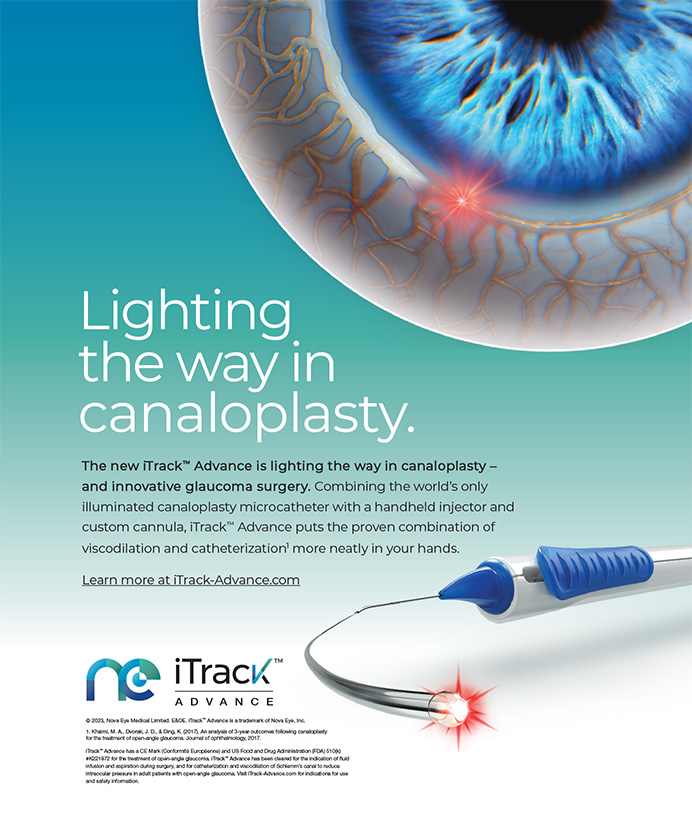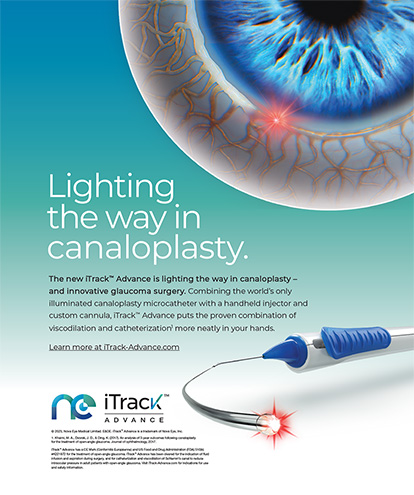The harmonious convergence of lamellar corneal surgical and excimer laser technologies has allowed surgeons to achieve generally excellent results for most LASIK cases, but has also created new opportunities for both infection and inflammation following the procedure. Infectious keratitis is a potential threat with any ophthalmic surgery, made even more serious when organisms are given the opportunity to sequester deep within the lamella, causing serious infection with resultant scarring and loss of vision. Diffuse lamellar keratitis (DLK), is a nonspecific inflammation of the cornea that occurs in the interface between the flap and the stromal bed. Both infectious and noninfectious keratitis complications can affect an otherwise ideal outcome in patients undergoing LASIK. To avoid infection, the LASIK surgeon needs to develop a rational approach to antimicrobial prophylaxis.
The First Defense
A powerful tool for preventing infection, in addition to careful aseptic technique, is the judicious application of both antiseptics and antibiotics. Antiseptics work by an immediate contact mechanism of action, rapidly and effectively reducing the presence of organisms on the ocular surface that might find their way underneath the LASIK flap. Keep in mind, however, that it is important for the surgeon to protect the corneal epithelium from the toxic effects of topically applied antiseptics. One way to protect the epithelium is to first apply a topical viscous lubricant such as hydroxypropyl methylcellulose or carboxymethylcellulose, before applying the diluted antiseptic in the form of povidone iodine 2.5%. Fluoroquinolone antimicrobial agents are currently the agents of choice for topical application because of their broad spectrum of activity, and also their generally well-tolerated topical formulations. Today, fluoroquinolones such as ciprofloxacin, levofloxacin, and ofloxacin are considered the preferred agents for perioperative prophylactics during refractive procedures such as LASIK, LASEK, and PRK. Surgeons generally apply these compounds before, during, and after surgery.
There were some early concerns that the above-mentioned fluoroquinolone eye drops could have an effect on blocking excimer laser energy uptake (193 nm) during the procedure, but these fears have not been realized, and these agents enjoy widespread use without compromising refractive outcomes when applied in customary doses. There was also a concern whether applying topical fluoroquinolones directly to the stromal bed of the elevated flap following LASIK treatment posed any threat with respect to cytotoxicity. Fluoroquinolones are generally safe in prescribed doses, but surgeons should avoid pouring any of the commercially available quinolones (ciprofloxacin, ofloxacin, or levofloxacin) directly over the stromal bed after LASIK, because of the risk of direct cytotoxicity to stromal keratocytes. Also, the fluoroquinolone drops generally penetrate quite well with topical application alone. When using fluoroquinolones during LASIK as a preventive measure, ciprofloxacin, ofloxacin, or levofloxacin can be combined with the dilute povidone-iodine 2.5% antiseptic to maximize antimicrobial activity. This is a critical step, as both agents used together help guard against a variety of pathogens, including rarer exogenous contaminants that might not ordinarily respond to topical antibiotics alone. Organisms such as Nocardia, nontuberculosis mycobacteria and fungal pathogens, including Candida, have all been reported following LASIK. Fungal infections such as Candida may mimic noninfectious keratitis, and can be exacerbated by misdiagnosis (as DLK) and the application of topical corticosteriods. Therefore, it is critical to examine the patient with a slit lamp in the early postoperative period to try to differentiate noninfectious inflammation from the inflammation associated with early infectious keratitis after LASIK. In particular, the clinical sign of cell and flare in the aqueous humor is most often associated with infective rather than noninfective keratitis.
Sterility is Key
In addition to topical chemoprophylaxis with antiseptic and antibiotics, I advise surgeons to follow recommended aseptic practices for the LASIK procedure. The LASIK refractive surgery team should attempt to discriminate between which instrument supplies and events are considered sterile as opposed to surgically clean. I also recommend that the LASIK surgeon follow strict aseptic technique when handling sterile items that come in direct contact with the operative eye, and anything that touches the operative eye during the LASIK procedure should be sterile.
Aggressive management and prevention are critical to reducing infections. LASIK needs to be treated as an ophthalmic surgical procedure, not as a nonsurgical treatment. Staff should be instructed in the principles of sterile operative technique. Various articles of surgical attire should be worn to provide a barrier to contamination that may pass from personnel to patient, as well as from patient to personnel. Proper cleaning and care of the microsurgical instruments and microkeratomes prolongs the life of the instrument, and also reduces the incidence of delays with the automated microkeratome. It is important to reduce the spread of particulate matter in the environment where the LASIK procedure is performed so it cannot enter and settle in the interface of the corneal flap and stimulate inflammation.
Maintaining a Sterile Field for LASIK
Sterile barrier drapes help establish the sterile field, and the LASIK surgeon should perform a surgical hand scrub prior to donning sterile powder-free gloves. In my experience, the most important factor for sterility is the use of the sterile eye drape to sequester the cilia and the meibomian glands from the operative field. All items presented to the sterile field should be inspected for proper package processing, as well as package integrity. In some cases, DLK or noninfectious inflammation at the interface has implicated the sterilizers that are used for the LASIK instruments. The sterility of the instruments and the functioning of sterilizers must be ensured by standardized methods. The sterilizers with reservoirs that can maintain water for an extended period of time represent a potential risk of microbial contamination, especially with unusual gram-negative organisms that can replicate during the period that the sterilizer is not in use. This can increase the level of biofilm within the fluid. Although the sterilizer will then properly kill the microorganisms, the biofilm residue may remain and contaminate instruments that find their way into the LASIK procedure. This biofilm contamination with bacterial endotoxin within the interface has been implicated in epidemic outbreaks of DLK.
DLK is most likely a multifactorial event that can occur in both epidemic and nonepidemic forms. A number of factors can potentially lead to the release of cytokines that attract leukocytes and other inflammatory cells to the LASIK interface. Epithelial defects have been associated with an increased occurrence of DLK, even with recurrent corneal erosion many months after the LASIK procedure. Thus, the epithelium may release cytokines that can incite inflammation.
To reduce the incidence of DLK, LASIK surgeons should follow the standardized aseptic techniques, including using a single blade for every patient. Blades should not be used on multiple patients because of the risk of HIV and hepatitis, as well as prion-associated disease. By minimizing the amount of contact with instruments that require sterilization, the likelihood of DLK is reduced.
DLK Suspected
Once the surgeon suspects that DLK is occurring in the early postoperative period, it is important to exclude the possibility of infection. If the inflammation intensifies to grade 3 or 4, elevate the LASIK flap and obtain material for culture and susceptibility testing. I also recommend washing out the interface aggressively with sterile balanced salt solution. It may help to initiate the use of topical antibiotics and topical corticosteroids. Some LASIK surgeons have recommended a brief pulse of oral corticosteroids once infection has been excluded, and if there are no other system contraindications to oral steroid therapy.


